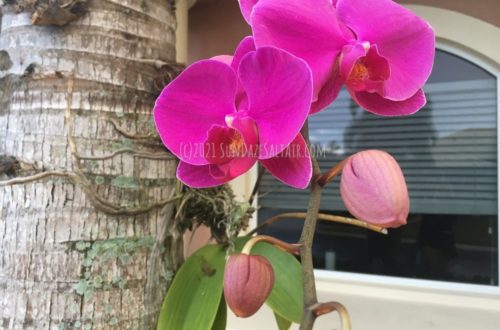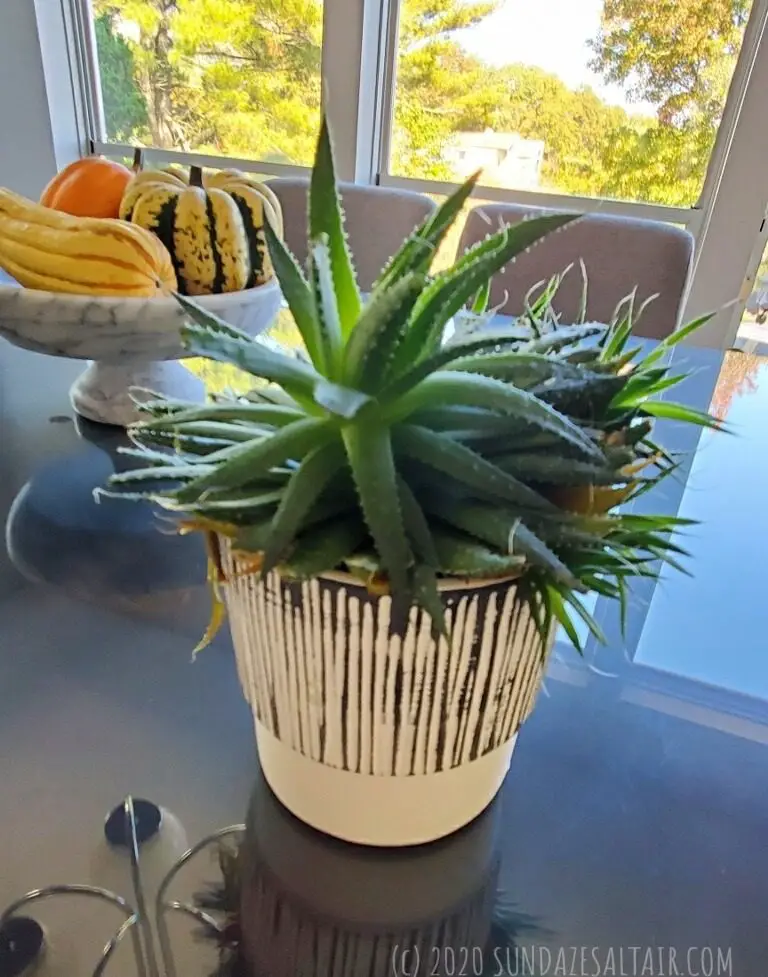
How To Care For A Zebra Succulent AKA Haworthia: An Easy Step-By-Step Guide To Everything You Need To Know Plus How To Save A Dying Zebra Succulent
The Definitive Guide To Caring For & Saving A Dying Zebra Succulent Plant AKA Haworthia
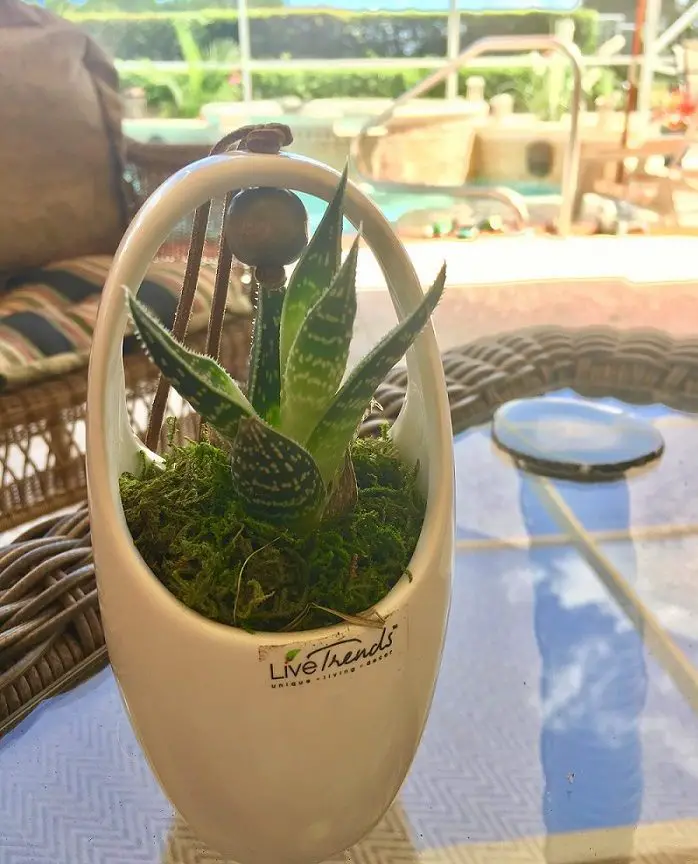
The Haworthia AKA Zebra Succulent Plant - Striking Looks & Low-Maintenance Care
The Haworthia succulent is a family of striking and low-maintenance plants that have become a ubiquitous sight on social media and in home offices everywhere. With distinctive, simultaneously cute and exotic looks that harken to a certain striking African equine, the Haworthia or Zebra succulent has become the ideal photogenic yet low-maintenance houseplant for minimalists everywhere.
In this post, I will discuss some quick and easy tips on how to care for your Zebra plant and also how to diagnose and treat one that shows signs of distress or dying. But first, some basic information on your exotic houseplant companion...
A Succulent With Many Names
While you probably know the Zebra succulent by sight, you are probably not familiar with some of the many names it goes by. The Zebra plant is also known as Zebra Haworthia, Pearl And Star Window Plant, and by the botanical names of Haworthia Fasciata and Haworthia Attenuata, to name just two of the more well-known varieties. While the Zebra succulent may have many names, the plant itself is actually a very low maintenance plant to care for if you simply follow the following basic care guidelines.
**Note: This post contains affiliate links for which a small commission may be earned if you decide to make a purchase through a link.
Why Choose A Zebra Succulent - Versatility & Ease Of Care
With their small, dainty size, Zebra succulents are the perfect houseplant to display in small spaces and unique, dainty pots, making them excellent gifts. They look striking potted in everything from teacups to all sorts of adorably quirky containers, and all manners of unusual potting mixes.
With good looks and an easy to care for nature, it's not hard to see why the little Zebra succulent has become the decorative plant of choice to give as hostess gifts and to grace home offices and living spaces. But, as with all living things, Zebra succulents have some very specific needs that must be met in order to for them to thrive wherever they are planted.
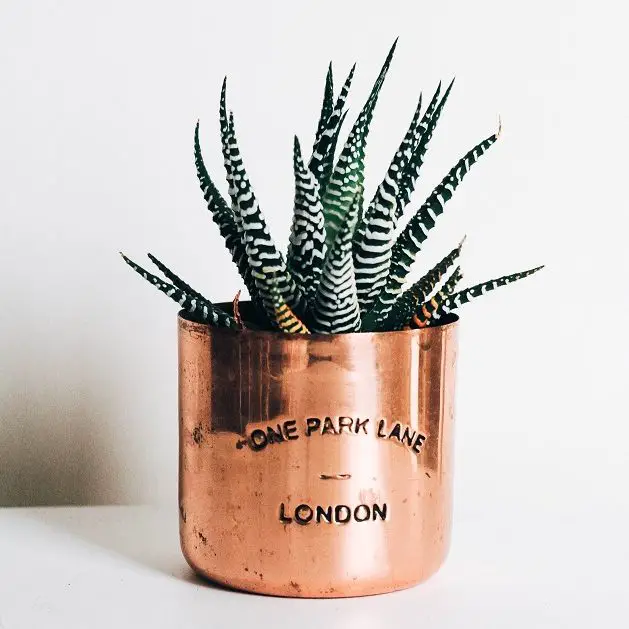
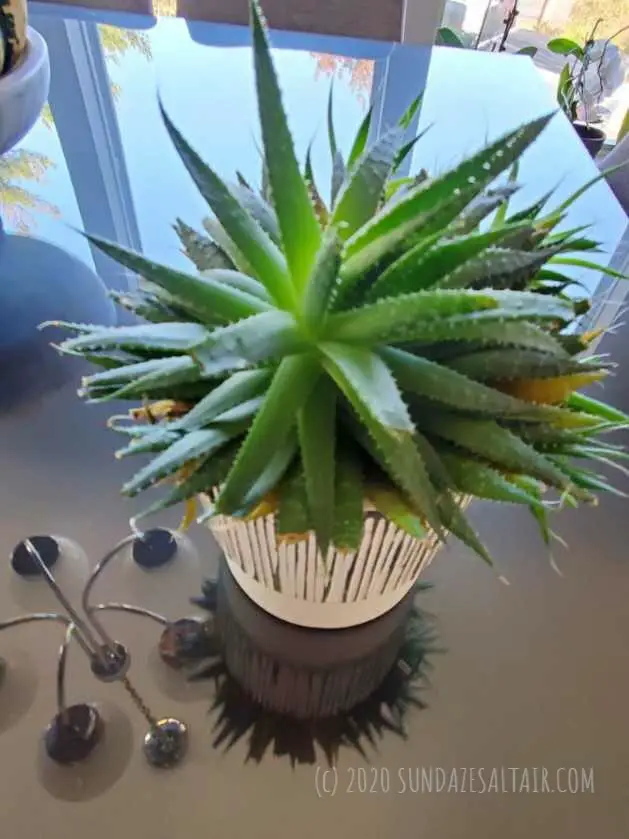
Is the Zebra Plant A Succulent Or A Cactus?
Let's settle this one... The Zebra Haworthia, with its plump, stiff leaves, is often commonly, but incorrectly, referred to as a Zebra cactus, however, despite appearances, it is most definitely a succulent and not a cactus. As a succulent, the Zebra plant is able to store water in its thick leaves, stems, or roots to sustain it during prolonged periods of drought.
Why Is It Called A Zebra Succulent?
Well, one look at the Zebra succulent's horizontal white ridges or whitish textured bumps and it's not hard to recall a certain distinctive African equine... One of this succulent's most distinctive physical characteristics is its resemblance to the exotic animal, which further helps lend an exotic vibe to any room you place your Zebra succulent in. The zebra-like markings do actually differ slightly in appearance between two of the more common types of Zebra succulents, Haworthia Fasciata and Haworthia Attenuata, with the Attenuata appearing as more of a wart-like raised bump.
Other Than Stripes, What Does A Zebra Succulent Look Like?
In addition to the aforementioned distinctive zebra-like appearance, with similar shapes and pointy, thick sword- or tongue-shaped leaves, the Zebra succulent also closely resembles its cousins in the Asphodelaceae family, the Aloe and Gasteria plants. All of the plants are clump forming succulents in a rosette shape with thick leaves, so they can easily be confused, at least from a distance.
However, unlike its cousins, Aloe and Gasteria, Zebra Haworthia succulent plants are almost always very small and dainty. Zebra succulents also stay small throughout their lives as they are very, very slow growing plants.
Adding to its charm, during its growing season, from late spring until early fall, the Zebra succulent can even grow and display tiny flowers on its thin stems.
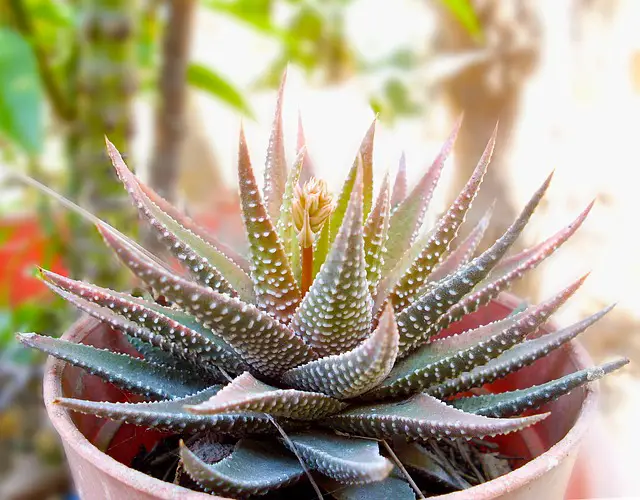
A Small Plant with Big Impact - How Big Does A Zebra Succulent Get?
Zebra succulent leaves can grow from approximately four (4) inches to eight (8) inches tall at maturity and the center rosette spreads to about five (5) inches in diameter, and due to its extremely slow-growing nature, it will remain compact throughout its life.
No Garden? Grow Succulents on Rocks Indoors with Faux Rocks...


Where Can Zebra Succulents Be Grown?
Zebra succulents can be grown outdoors in gardens in US Department of Agriculture plant hardiness (subtropical) zones 9 and 10, but in colder climates with seasons they should only be grown indoors within homes or greenhouses.
Now, read on for some quick and easy guidelines on how to care for, recognize signs of distress, and revive a dying Zebra succulent plant.
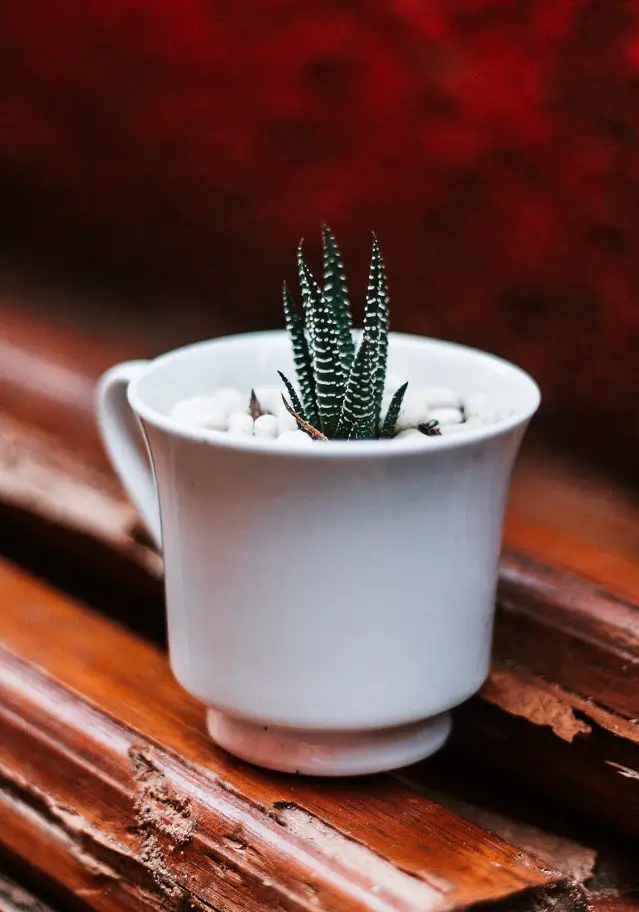
************
How To Care For & Save A Dying Zebra Succulent Plant
The following signs will help you diagnose and treat an ailing Zebra plant and help avoid future stress and illness.
Sign Of Distress #1: Does Your Zebra Succulent Have Yellowing Leaves?
Diagnosis: You Might Be Overwatering - How Much Water Does A Zebra Succulent Need?
Native to sunny and subtropical, yet relatively dry, South Africa, Zebra succulents grow in the South African shrubland where they have acclimated to receiving shaded sunlight filtered through the brush all while withstanding long periods of drought, effectively making them the "camels" of the plant world.
Zebra Succulents - The "Camels" Of The Plant World
Unlike in tropical climates, the South African subtropical zone has long dry spells with semi-arid conditions, to which the Zebra's succulent nature has adapted to survive these periods of scant rainfall by storing water in its thick leaves, roots and stems.
Bottomline: The Zebra succulent can tolerate underwatering much better than overwatering.
Prevent Overwatering With The Touch Test - Test The Soil With Your Hand Before Watering
As a consequence, one thing you will want to guard against with your Zebra succulent is the possibility of overwatering, and possibly killing, your plant.
To avoid this, during the warm growing season, from spring through early fall in temperate zones, you will want to water your succulent when the soil feels dry to the touch. However, during particularly hot summer months, try not to let the soil get too "bone" dry as the hot summer is when your Zebra plant will need the most water all year long.
How Much Water Does My Zebra Succulent Need & When?
Preferably early in the day, provide your plant enough water to soak the soil down to a depth of approximately six (6) inches. In the hot summer growing season, you may want to water once every seven (7) to ten (10) days, but always test the soil first. Do not water if the soil of your Zebra plant is still moist to the touch from a previous watering or rain as the Zebra plant, like all succulents, is at serious risk from suffering root rot in watery, overly moist soil.
In addition, always try to keep water out of the rosette leaves or crown area of your plant since any water that gets trapped in there could lead to rotting - especially in cooler temperatures.
How Much Water Does My Zebra Succulent Need In Winter? In The Dormant Season Everything Slows Down & So Should Your Watering
Cut back on watering significantly in the winter by allowing longer intervals between watering such as two (2) weeks or even up to three (3) weeks depending on moisture content of the soil. Follow that general guideline unless you notice wilting, browning edges on the leaves, extremely dry soil or other signs of obvious dryness, and then water in shorter intervals. This is due to the fact that during the cool winter season growing really slows down so you need to be very careful not to overwater your Zebra plant or risk the chance of root rot.
Keep in mind how efficiently succulents can store water in their leaves and roots during dry spells and make sure you hold off on watering until the top of the soil has dried out a bit.
When you do water, you will want to water enough to barely moisten the soil since, during its non-growing season, the Zebra succulent's roots are especially prone to rotting when in wet soil.
What Type of Soil Should You Grow Your Zebra Succulent In For Proper Drainage? Prevent Overwatering Effects By Not Using Regular Potting Soil
Bearing in mind the Zebra succulent's capacity to store water, you will want to only choose a coarse, gritty potting medium that provides excellent drainage. Therefore, you should never just use regular soil to pot your Zebra plant because it simply holds way too much moisture which will rot and kill your plant's roots.
Instead, a medium such as succulent or cactus potting mix will have large enough particles to provide plenty of drainage and aeration to tender roots. If you are putting together your own potting mix, be sure to add in at least 50% part larger particulates, such as sand, crushed granite, perlite or pumice, to any soil to ensure optimum drainage.
Large particles at the surface soil will also prevent the lower leaves from being in contact with too much wet soil. If growing outdoors, it is also imperative to have good drainage, especially important when the rainy season comes around.
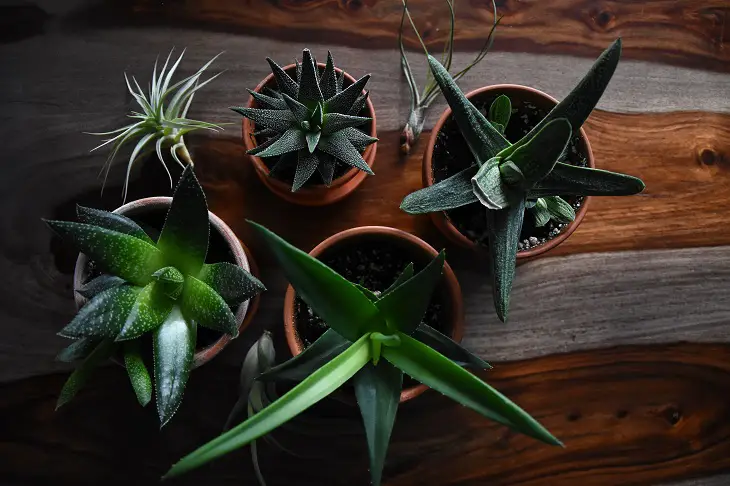
Prevent Effects Of Overwatering With Proper Pots For Your Zebra Succulent - Beware Of The Pots Succulents Come In! Avoid Ceramic Or Glazed Containers In General
Many of the succulents you see for sale in stores are sold in cute ceramic pots with absolutely no drainage holes! Yes, I know, practically criminal considering what we know about succulent's intolerance for too much water, and the rotting dangers such a waterlogged situation could pose for your delicate succulent. You should really consider repotting your succulent into a container with a drainage hole or two.
Drainage Holes: Proper Ventilation & Aeration Is Essential
While you can grow your Zebra succulent in a variety of unique pots, always make sure any pot you choose has drainage holes drilled into the bottom of it to promote good airflow to keep the roots suitably dry and aerated. There are so many adorable little containers now on the market intended just for little succulents but beware of cute ceramic or glazed containers that lack proper ventilation thereby increasing the risk of moisture retention.
Be Careful With Rocks In Your Potting Mix
If you do use any types of rocks or pebbles as part of your potting mix, make sure you do not layer any of these rocks at the bottom of your succulent container by the drainage area where they could potentially block the drainage holes. Instead, you can use a thin layer of mesh which will help conserve the soil/potting mix while encouraging excess water to drain freely.
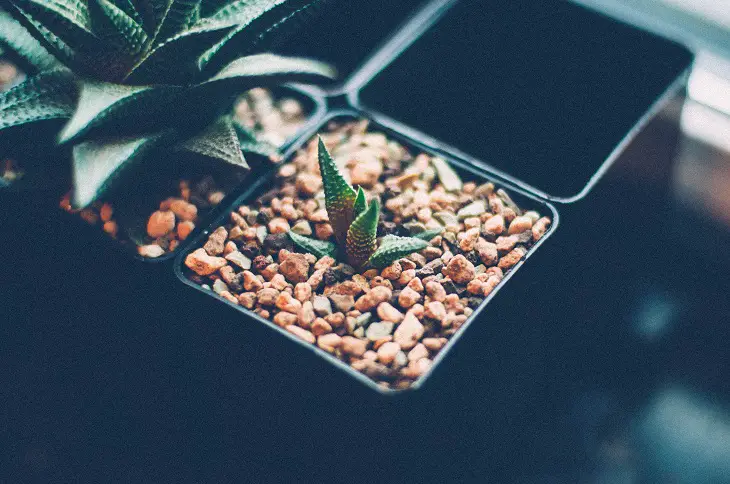
***********
Sign Of Distress #2: Are Your Zebra Succulent's Leaves Turning Brittle And Brown?
Diagnosis: You Might Be Underwatering - Beware Of Underwatering Your Zebra Succulent
One great danger with indoor succulents is accidentally underwatering them. As easy as it is to overwater, it is equally easy to underwater, especially when you assume your plant has sufficient water stored indefinitely causing you to not water for weeks at a time. Your Zebra succulent is not a cactus and needs moisture to be periodically delivered to its roots which only you can provide for indoor plants.
Though your Zebra prefers to be on the dry side, do not let it get too dry. If you do, in the end, you are effectively killing your succulent through dehydration. Succulents' stored moisture in their leaves will eventually run out and next thing you know you have a severely dehydrated succulent on your hands.
Schedule Interval Watering
To avoid this, try watering on a schedule where you observe longer intervals between watering during the winter months when your Zebra succulent enters its slow growing dormant phase. In contrast, during the warm active summer growing season, observe shorter intervals between watering. When indoors, your succulents, like any of your other plants, are relying on you for water. To strike the right balance between underwatering your succulents where the soil gets super dry and overwatering them and risking rot, try to keep a consistent watering schedule and always monitor the moisture content of the soil using your fingers.
**********
What Temperature Is Best For A Zebra Succulent?
As natives of subtropical South Africa, Zebra succulents like warmth and temperatures anywhere from 65 degrees Fahrenheit (18 degrees Celsius) to 80 degrees Fahrenheit (26 degrees Celsius) are considered ideal. They are not hardy plants and lack the ability to endure sustained cold.
Protect Your Zebra Succulents From The Cold
Therefore, if outdoors and overnight temperatures start to drop into the forties, make sure to place a light covering over your plant to protect it and hold in heat. Remove the covering immediately in the morning so moisture doesn't get a chance to begin collecting and lead to rot. Zebra succulents can endure and survive brief cold as well as heat but, as stated earlier, are very sensitive to too much rot-inducing moisture.
You can also place your Zebra pots under trees or in another sheltered area to keep it protected from brief cold snaps. Of course, if you can relocate your Zebra plant indoors during cold snaps, that would be the best prevention.
Remember that in the desert, where many succulents are found, night temperatures can often get cold, but as long as temperatures remain above freezing and quickly return to warm conditions in daytime, your succulent should be able to "weather" any short cold snaps. Of course, any temperature below freezing, 32 degrees Fahrenheit (0 degrees Celsius) for a prolonged period of time puts your Zebra plant at immediate risk for damage as it is too cold for a succulent to survive.
************
Sign Of Distress #3: Are Your Zebra Succulents Leaves Turning Reddish, Purple Or Brown?
Diagnosis: Your Zebra Succulents May Be Exposed To Too Much Direct Sunlight
How Much Sunlight Does My Zebra Succulent Need? Beware Of Direct Sunlight
Zebra succulents grow in the South African shrubland where they have acclimated to conditions where they receive shaded sunlight filtered through the brush. This ability to tolerate low light makes the Zebra succulent an excellent indoor houseplant.
Thus, locate your Zebra plant near a window where it can receive just partial sunlight. You will want to avoid placing your plant near a window with Southern exposure as that would expose it to too much direct sunlight which, in turn, will cause your plant to turn an unappealing deep red, purple or brown color to show its stress.
How Much Sunlight Does My Zebra Plant Want?
The ideal amount of sunlight for your Zebra succulent is between four (4) to six (6) hours of bright, filtered sunlight per day.
If you notice any reddening or darkening color change to your plant, consider it an early warning sign to relocate your Zebra succulent near an east or west facing window which will supply less bright sun for part of the day. If you don't heed early signs of stress in your reddening Zebra plant, too much continual sun exposure will eventually cause it to turn white and dry up, killing the plant.
On the other hand, if your living space receives insufficient light for part of the year and you suspect it is impacting your ability to grow and cultivate your plants, you may want to consider using a "Grow Light." A Grow Light helps to supplement your plants' lighting requirements especially during long, dark winters.
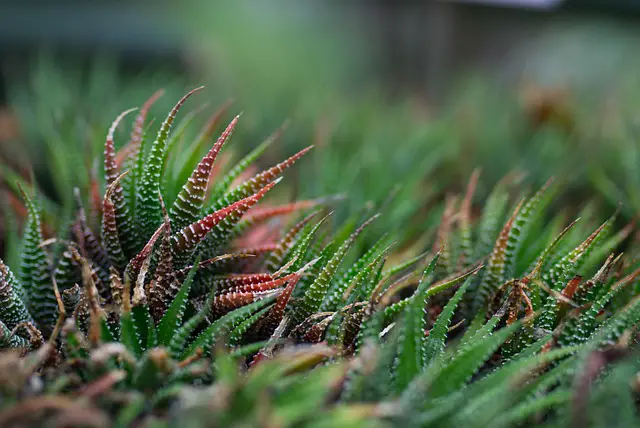
************
Sign Of Distress #4: Is Your Zebra Succulent Looking Lighter, Losing Its Distinctive Markings & Getting Thinner & Lankier?
Diagnosis: Your Zebra Succulents May Not Be Getting Enough Sun - Beware Of Too Much Shade
Winter Sunlight Concerns For Indoor Zebra Plants
Conversely, during the winter, when natural light levels are much lower, you may want to move your indoor Zebra succulent to a brighter area, so perhaps near a window with Southern exposure would be preferable in winter months.
Outdoor Zebra Plants - Partial Sunlight In The Garden
In your garden, while you want to avoid excessive direct sun, you also want to avoid too much shade. Plant your Zebra succulent in an area where it receives partial sun, about 4 to 6 hours should suffice. Morning light would be ideal so if possible plant it where it receives Eastern sunlight exposure.
***********
How Does Humidity Affect My Zebra Succulent?
Much like with the amount of water you give your Zebra succulent, you will also want to be conservative in the amount of humidity your plant is exposed to. Like with most other succulent plants, humidity is not important to them and can even be harmful.
Therefore, if you reside in a climate with very humid summers, you will want to ensure your Zebra succulent spends more time indoors in a controlled environment where you can ensure your plant is not exposed to prolonged humid conditions which could lead to fungal issues and end in rot, potentially harming your plant. Wet soil and humid hot air are always a bad combination as they prevent the soil from drying out quickly.
If you heed the potting suggestions mentioned in Section #1 above, you will further protect you plant from the effects of humidity and moisture retention.
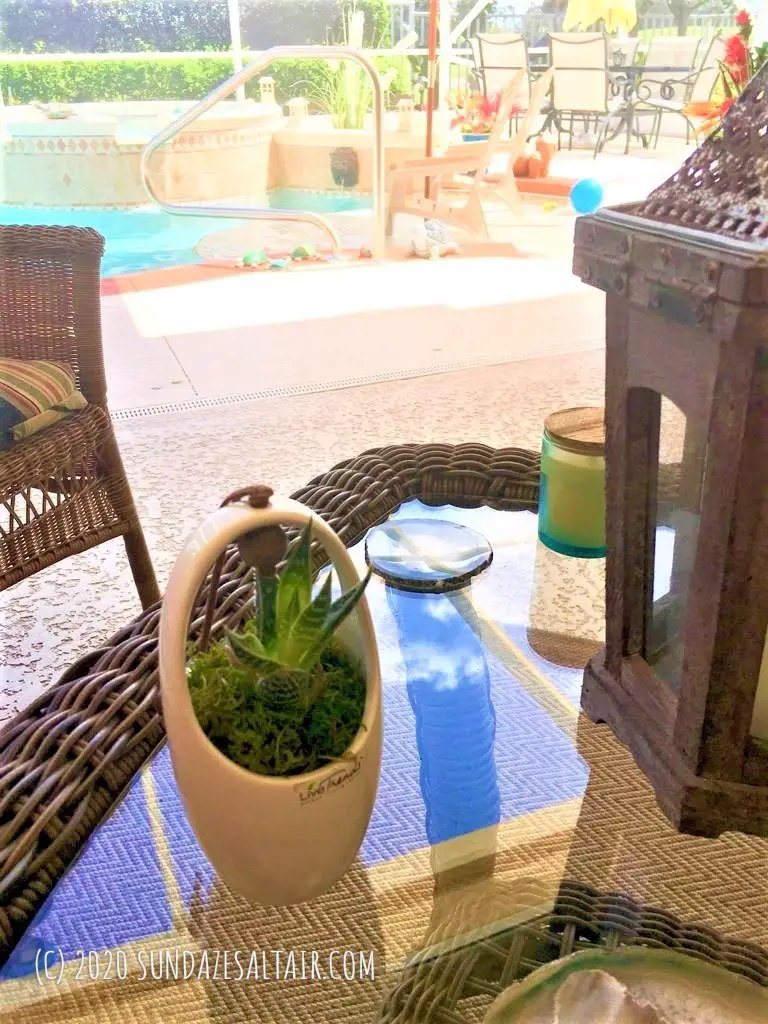
***********
Sign of Distress # 5: Is Your Zebra Succulent Dropping Dried, Brown & Brittle Leaves?
Diagnosis: If You Have Ruled Out Any Of The Other Causes Above Such As Dehydration, Then Your Plant May Just Be Shedding Old Leaves
As your Zebra plant ages, it is very common for old lower leaves to dry up and turn brittle. When you notice this happening, you can speed up the process by attempting to remove them by gently tugging on each one. When they are ready and brittle enough, they will detach easily and you won't have to pull hard which could damage your plant.
***********
More Fun Facts About Zebra Succulents
Differences Between The Two Popular Types Of Haworthia
Of the approximately 60 species of Haworthia, two of the more popular Zebra plants include the Haworthia Fasciata and the Haworthia Attenuata. The Haworthia Fasciata has smoother inner leaves in contrast to the Haworthia Attenuata which displays tubercles, which are also known, much less appealingly, as warty growths. The Haworthia Fasciata is also said to be less common than the Attenuata, and also displays fatter leaves than its relative. In addition, the zebra-like markings do differ slightly between the Haworthia Fasciata and the Haworthia Attenuata.
Do Zebra Succulents Flower?
A healthy Haworthia, in theory, should be able to produce a flower, albeit very small. However, flowering is not always common because it only occurs when all the proper conditions have been met. Depending on the variety of Haworthia, the flower can be a small red-pink or white flower growing from a thin stem known as an inflorescence. Make sure to cut stems of any flowers that start to wilt to keep your plant looking neat and to encourage continued blooming.
When Do Zebra Succulents Flower?
The greatest chance for any flowering to occur is in the weeks following the longest day of the year, or the summer solstice in the Northern hemisphere. This is due to the fact that this is the time when the plant receives the greatest amount of sunlight. If you are growing the plant outside, versus inside, you will have the best chance at getting it to flower due to its bright light exposure compared to indoor plants. Due to its rarity and because the plant is so slow growing throughout the year, the sudden appearance of a flower is often an exciting and welcome sign that your Haworthia is not only healthy, but thriving.
What Kind Of Foliage/Leaves Does Zebra Haworthia Have?
The Zebra Haworthia has a characteristic rosette of leaves. Each individual leaf is thick and patterned like a Zebra with white stripes or tubercles that resemble warts.
How Does Zebra Haworthia Grow?
Haworthia grow in clumps in the wild so feel free to grow them individually or surrounded by several other succulents in a container.
How & When To Repot A Zebra Succulent?
As small as they are, Zebra succulents still have the potential to outgrow the small pots they are typically sold in. If this is the case with your Zebra succulent, feel free to carefully transplant it to a slightly larger pot with drainage using the high drainage soil recommendations mentioned above. Also, even if you are not repotting your succulent to a larger pot, you may still want to refresh the soil every two years or so to ensure it continues to offer the optimum drainage Zebra succulents need.
Should You Fertilize your Zebra Succulent?
As soon as new growth begins to emerge in the spring, you can feed your Zebra succulent diluted slow-release liquid fertilizer following directions on the label. Be sure to only fertilize during the start of the growing season and maybe once again mid-summer and never during the winter season.
How To Propagate AKA Grow A New Zebra Succulent From An Old One?
Similar to Aloe leaves, you can propagate Zebra succulents by taking offsets or small "pups" and carefully removing them from the mother plant and replanting them. Select a firm healthy, leaf, and remove it from the main plant by gently twisting the leaf off the stem or rosette. Let the leaf then dry out as you allow the wound to heal before planting it in a shallow pot with drainage. However you choose to propagate, only water the soil once after the initial planting, allowing the new tender plant a few days to take root in the soil/potting mix. This will prevent possible overwatering and killing off the new growth.
Are Haworthias Poisonous To Cats, Dogs Or Humans?
No! Good news for our furry friends who like to nibble on everything -- happily, Zebra succulents are not poisonous or toxic to cats, dogs or humans if swallowed, but may cause irritation of the mouth or stomach and possibly induce vomiting.
Why Add A Zebra Succulent To Your Home Decor? Striking & Low Maintenance, the Zebra Succulent Is The Ideal Easy To Care For Plant For Small Spaces & Green-Thumb Challenged Home Gardeners
As a member of the succulent family, Zebra plants are very easy to take care of, being able to go for weeks without water. For those who lack green thumbs or do a lot of traveling and are rarely home but still like the idea of having plants in their living space, the low-maintenance Zebra Haworthia succulent gives you the benefits of greenery without all the fuss.
What they lack in size, their striking looks definitely make up for in a big impact, making Zebra succulents hugely popular for those seeking statement-making houseplants to become living home or office decor. Not to mention, this compactness makes them very versatile - perfect for placing in small spaces in need of easy, low maintenance visual impact where they look fabulous in all manner of unique-looking containers and interesting textured and rocky soil mixes.
Now, bookmark and follow these easy care and treatment tips, so you can ensure that your Zebra succulent is as healthy as possible for years to come...
Do you have any Zebra succulents living in your house? If not, what is your perfect houseplant? Let us know in the comments down below!
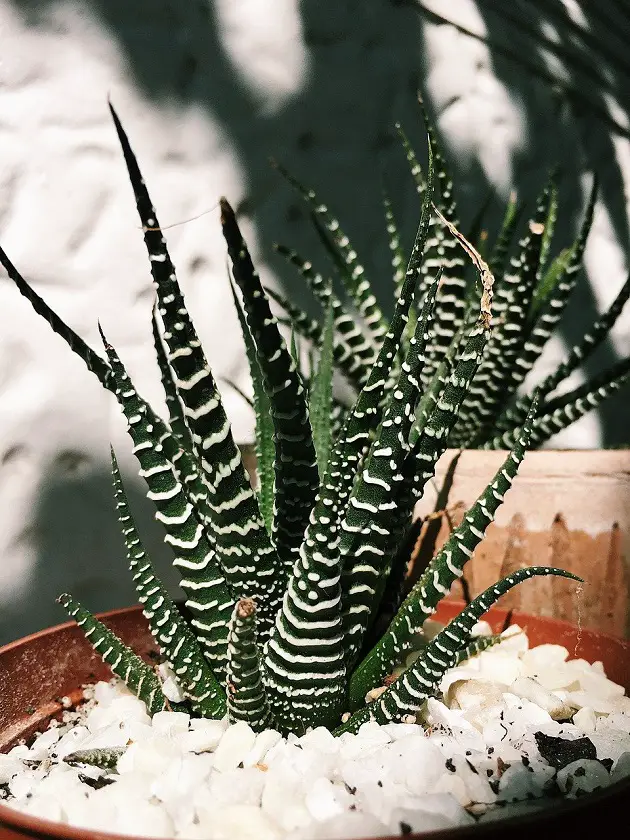


You May Also Like
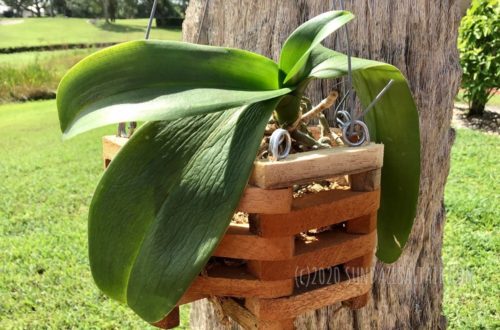
Why Are The Leaves Of My Orchid Wrinkled & Leathery, & How To Fix Them
June 9, 2021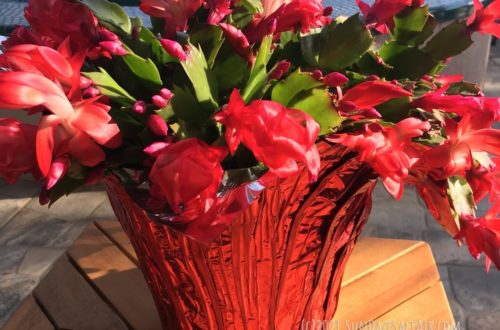
How To Get A Christmas Cactus To Bloom
December 13, 2021